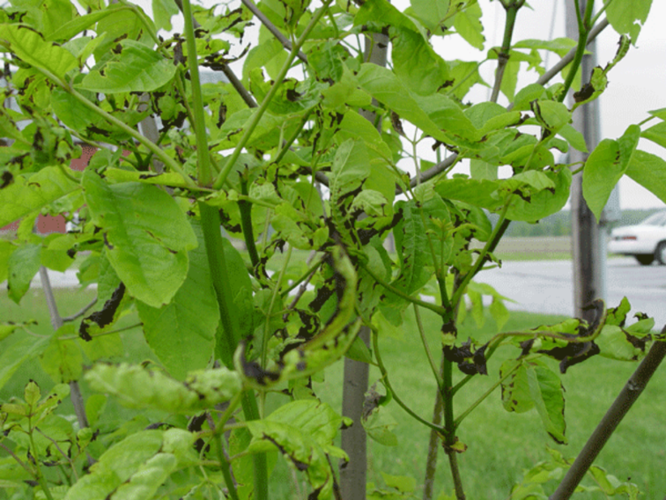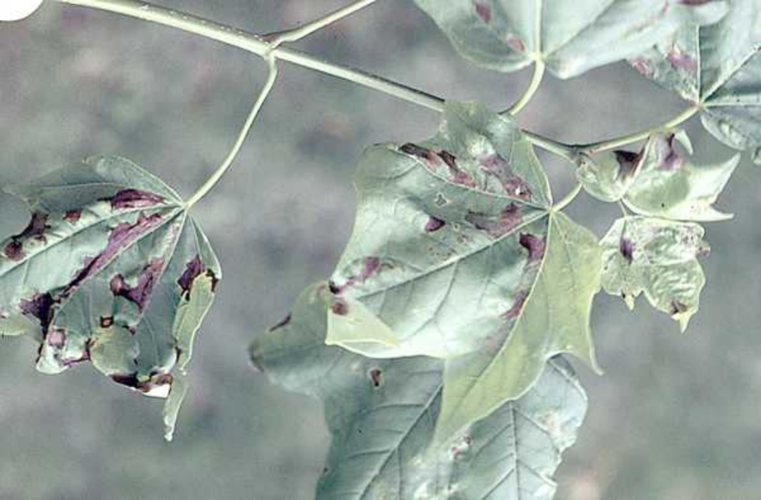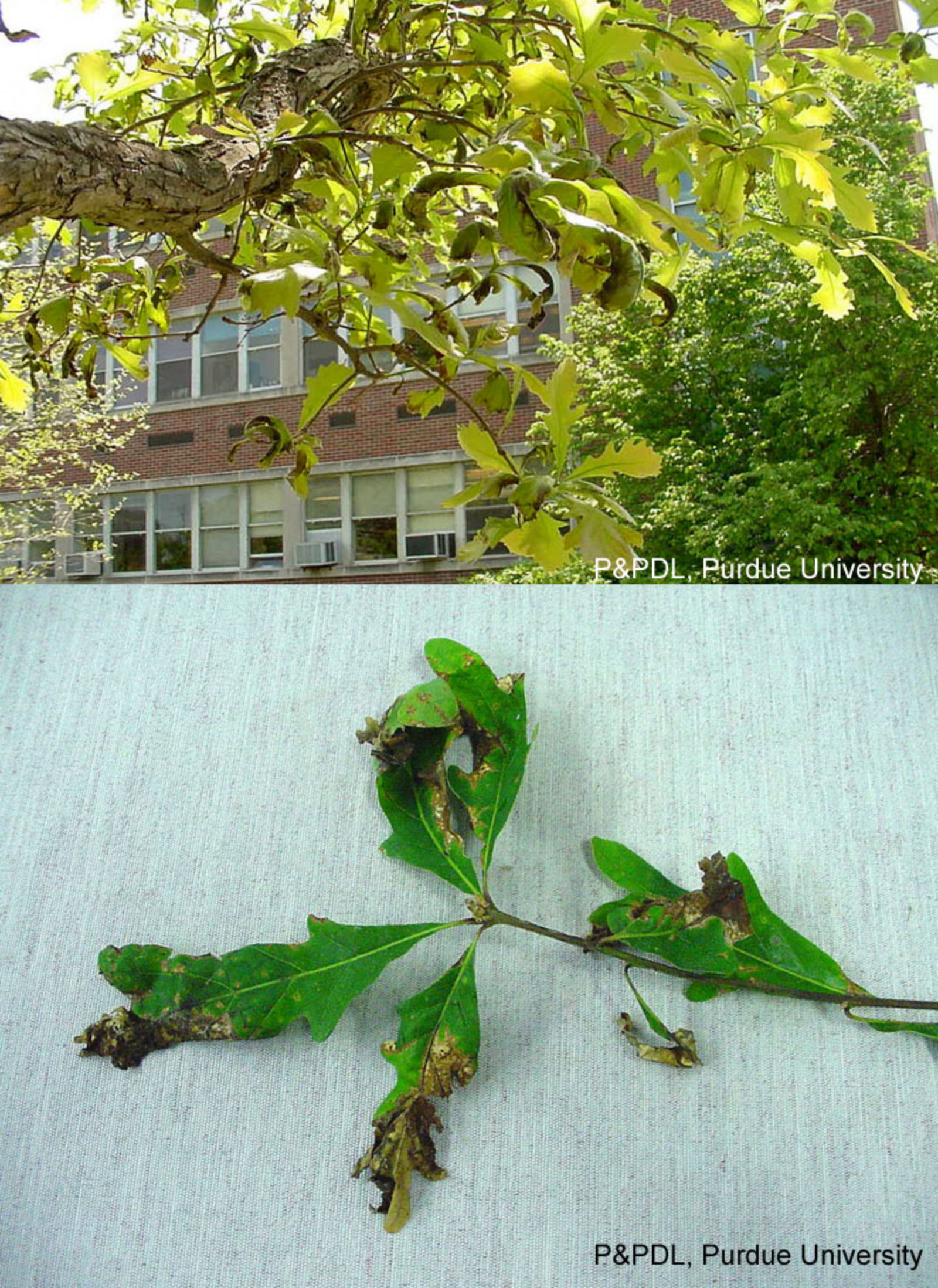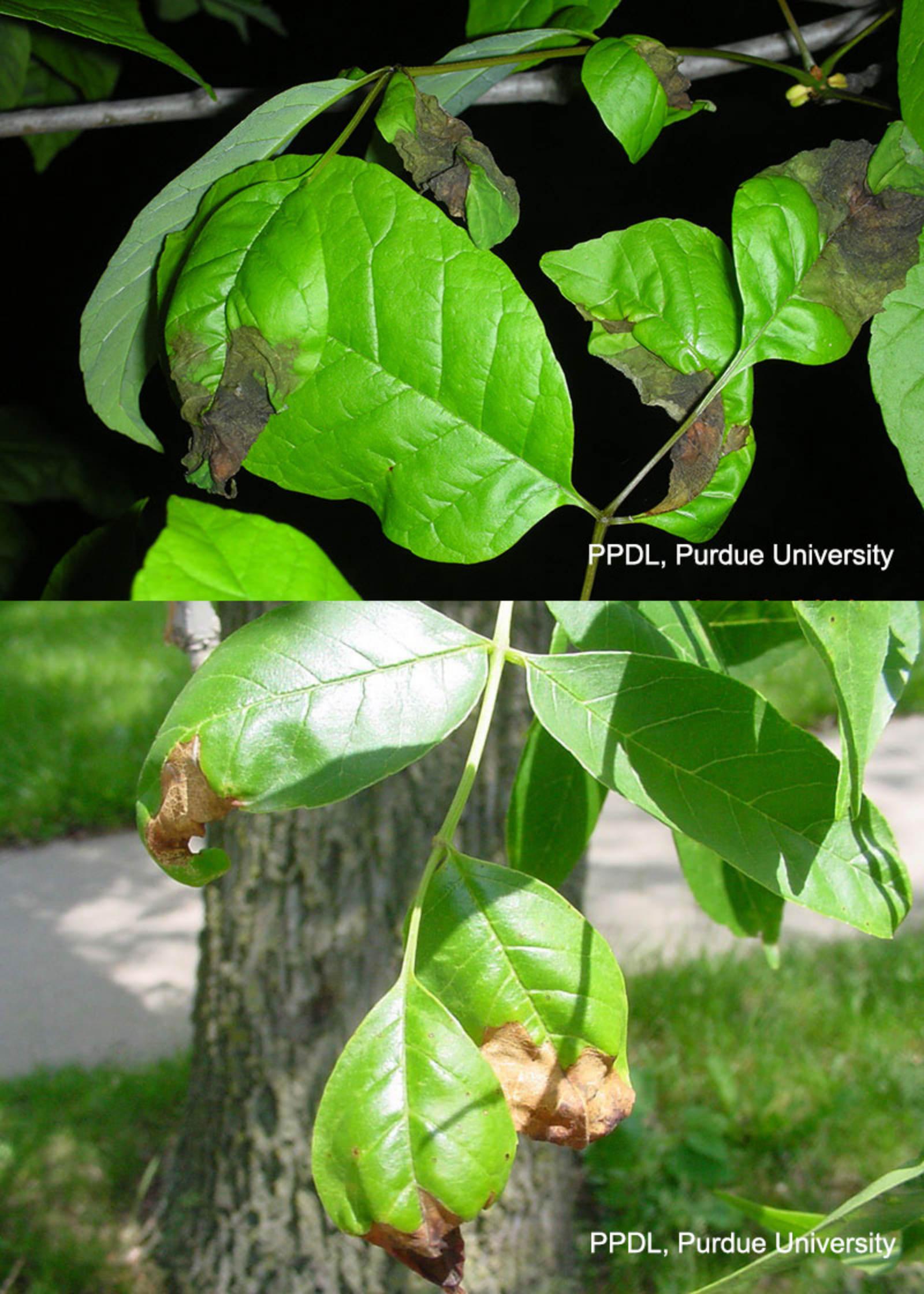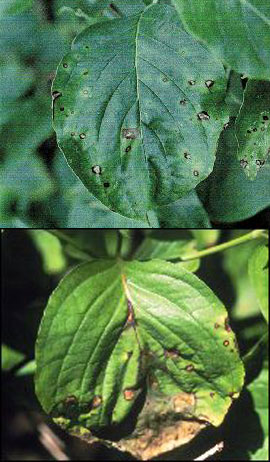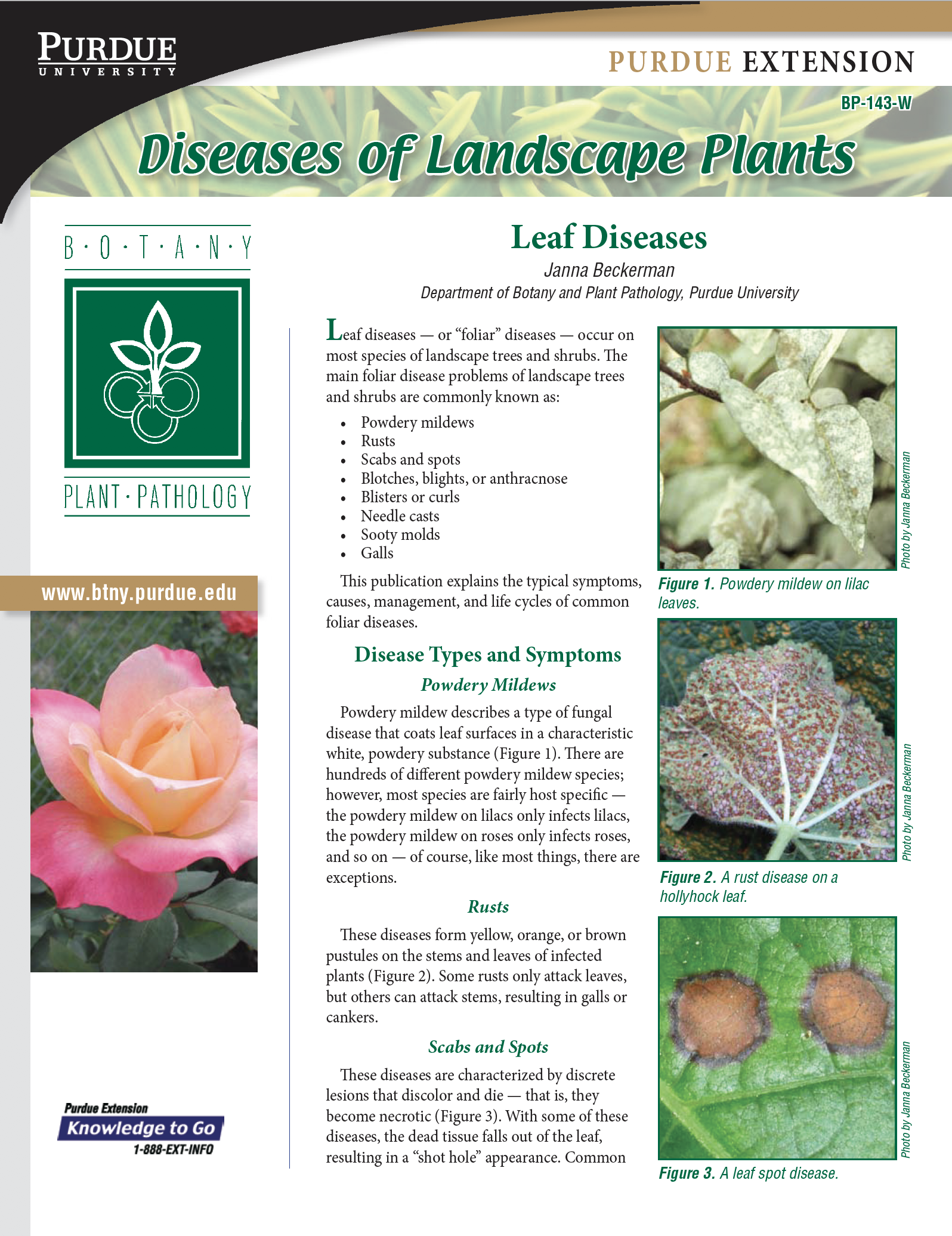Picture of the Week
May 16, 2022
Anthracnose of Shade Trees or Wind Injury: Look Alike Symptoms Can Be Perplexing
Gail Ruhl, Senior Plant Disease Diagnostician-retired, Purdue University
The cool, wet, weather experienced periodically this spring has been ideal for the development of anthracnose on shade trees.
Anthracnose is the common name for a type of leaf spot and canker disease caused by certain kinds of fungi. Anthracnose diseases affect many trees, but are particularly prevalent on ash, maple, sycamore, white oak, walnut and dogwood. Each species of tree is infected by a different species of fungus, thus the fungus does not spread from oak to maple or maple to ash or ash to sycamore. A different fungal species is also responsible for dogwood anthracnose.
Symptoms will vary depending on the type of tree and the stage of plant development at the time of infection: leaf spots or blotches; twig dieback and wilting; and browning or death of emerging leaves are all possible. Premature leaf drop often occurs with anthracnose diseases, however, most of the trees infected with anthracnose usually show good resilience, and are not permanently damaged by this early season leaf blight.
Click Images to Enlarge
Sycamore anthracnose causes severe blighting of newly emerging leaves and shoots, and eventually causes twig and branch cankers which distort growth. Twig and branch cankers, shoot blight, and leaf blight are all symptoms of the fungus that causes sycamore anthracnose. Leaflet drop, as well as dead tissue along leaf veins or at the leaf edges is a symptom for ash anthracnose. Although defoliation may be so great that anthracnose-infected leaflets practically carpet the walks and lawns nearby, the tree is not dying, it simply puts out a new set of leaves. Anthracnose symptoms on maple and oak range from leaf spots to enlarged blighted dead areas along veins and sometimes to shoot blight.
Abiotic (noninfectious) injury from environmental factors such as excessive winds or late frost/cold damage have also occurred this spring and may also cause foliar symptoms similar to anthracnose on various deciduous trees.
The most appropriate course of action for established trees suffering from severe effects of anthracnose is to rake and remove fallen leaves from beneath the tree; stimulate new growth with a balanced fertilizer after the leaves open and the spring rains have stopped; water regularly during extended dry periods this summer; avoid irrigation systems that wet leaves.
Please click on this photo for an article on Leaf Diseases in Landscape Plants.
Or one of these Purdue Landscape Report articles on Anthracnose.


